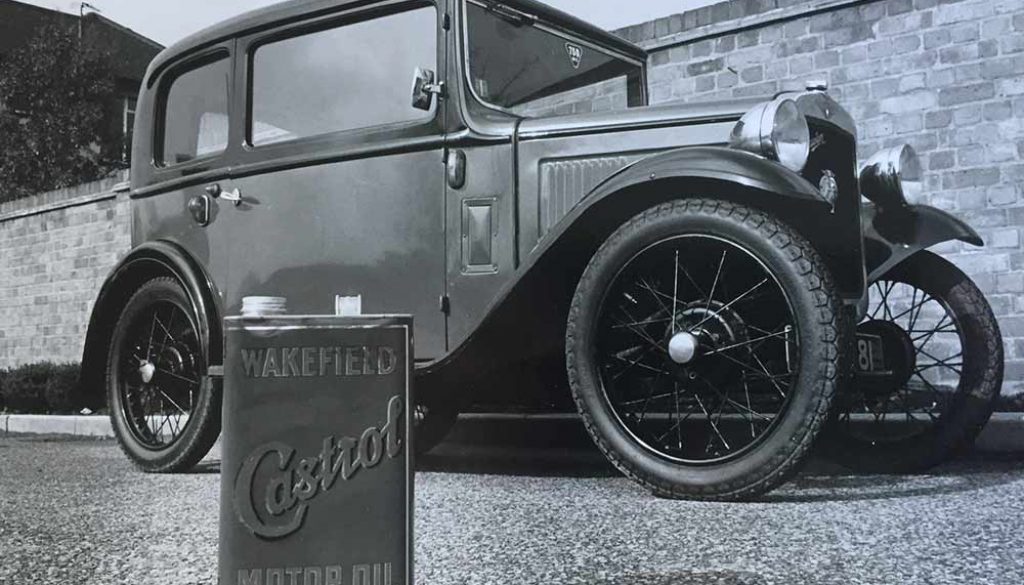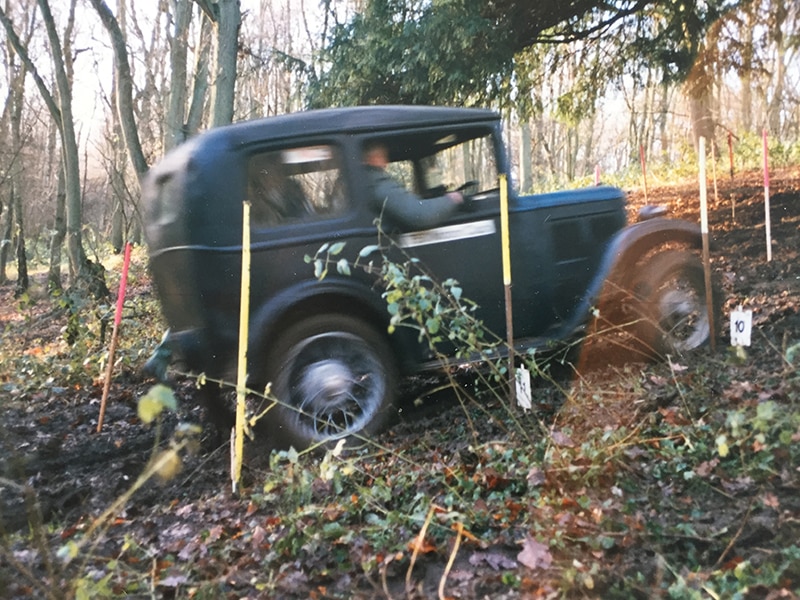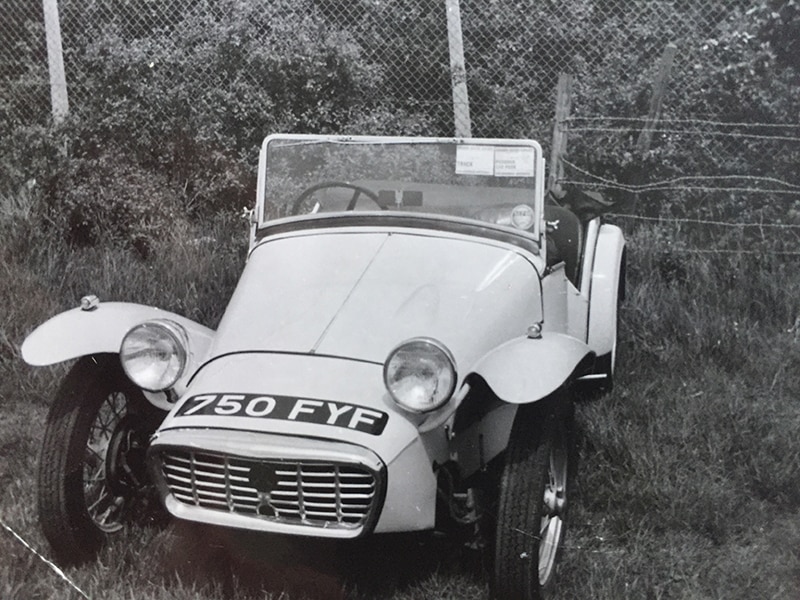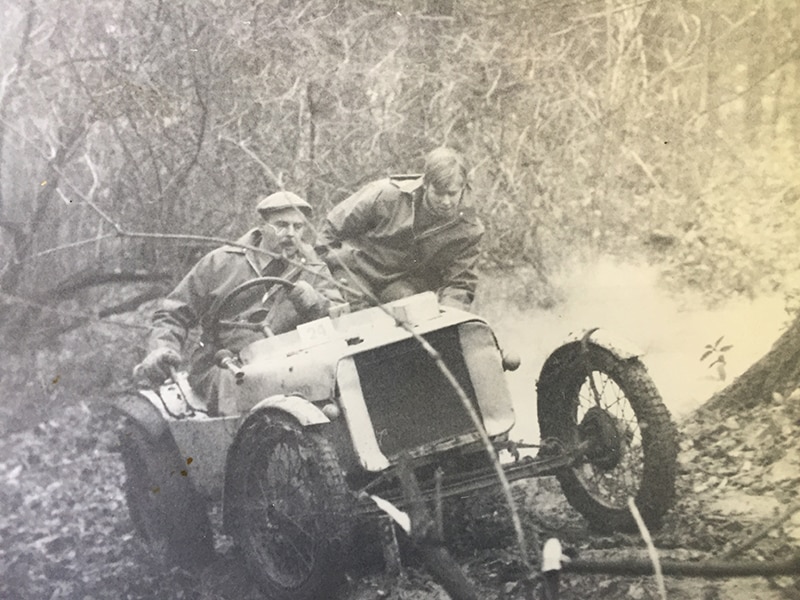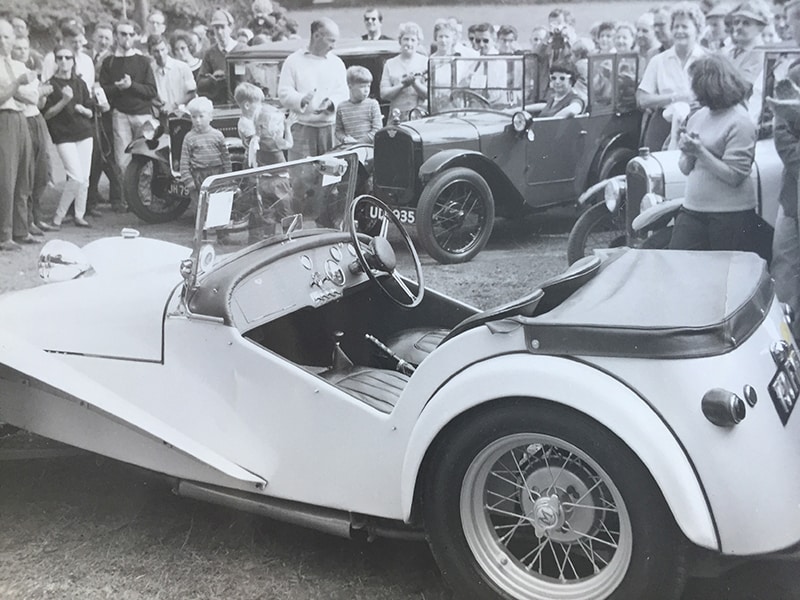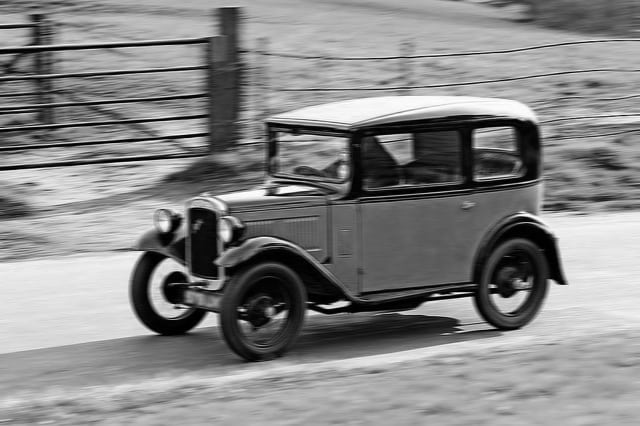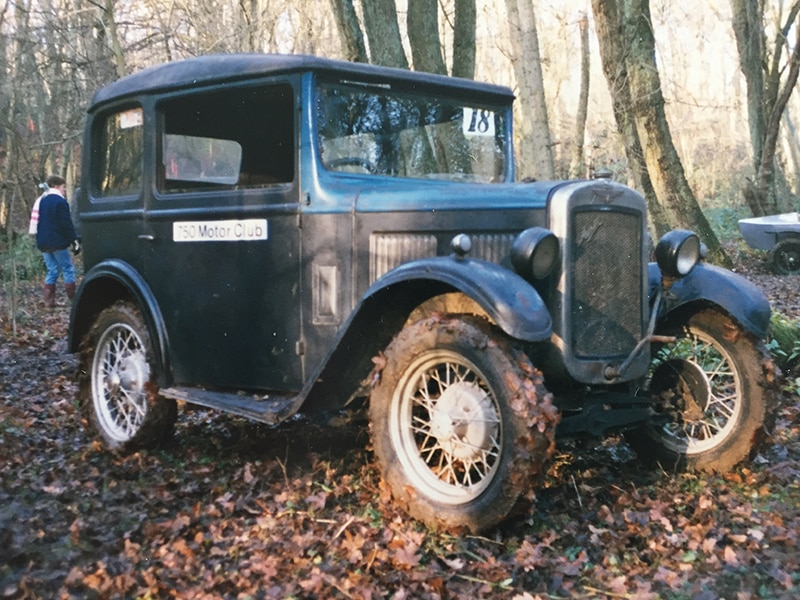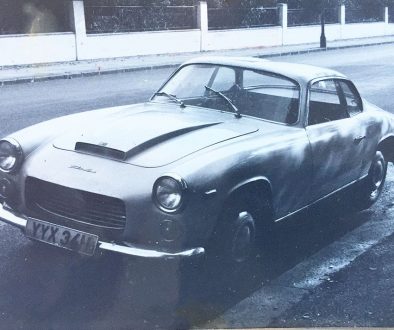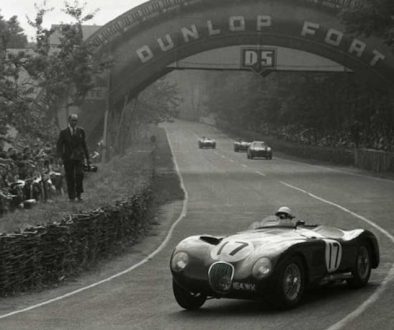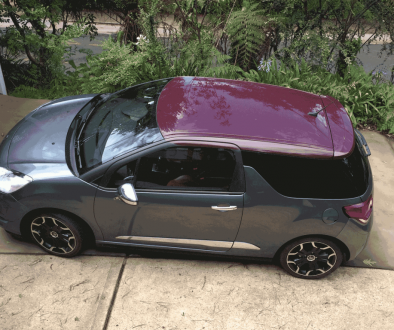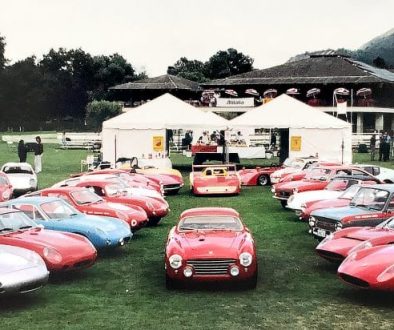I saw an old Austin Seven on the road the other day and it made me smile. When I see someone who is brave/foolhardy/enthusiastic enough to venture onto our crowded roads in an old, pre-war car I find myself wondering if driving an old car is still as much fun as it used to be.
For me, Austin Sevens were an intrinsic part of my introduction to driving, competing in motoring events and becoming a lifetime petrolhead.
How it all started – the 750 Motor Club
When I was a car-mad teenager, I was surrounded with equally car-crazy friends, encouraged by my car enthusiast father and all his car-besotted mates, whose world was centred around the activities of the 750 Motor Club.
The 750 Motor Club, so-called because it was formed around the Austin Seven, with a 747 c.c engine, the little cars that were incredibly popular in Britain from the mid-1920s until the late 1930s. With their easy availability, the Austin Seven was the ideal basis for some motoring fun after years of fighting and misery.
The 750 MC really took off after WW2 and gave many young car enthusiasts a chance to compete in motorsport events on a limited budget. Indeed, many very successful drivers and car builders started their racing careers in Austin Seven-powered racing cars; Colin Chapman of Lotus, and Eric Broadley of Lola among them.
Taking to the hills in an Austin Seven Trials car
A quick aside here: Sporting Trials are events in which cars must climb a series of torturous, usually muddy hills, and attempt to reach the top of each one without stopping. Each hill was marked from 10 to zero, and the driver with the lowest score at the end of the day won the event.
Luckily for me, trials cars must have a driver and passenger, so I became Dad’s keen teenage passenger who would bounce up and down when we lost traction and would hang over the side (like a motorcycle sidecar passenger) to stop the thing falling over. While the competition was taken very seriously, we had a lot of fun and did pretty well, winning two National Championships for the 750c.c. class.
However, looking at those old photos of the car, I’m reminded that it was hideously ugly and even a later nose job failed to make it much more attractive. Nevertheless, it was consistently successful.
Learning to drive in an Austin Seven-based ‘special’ (self-built sports car)
Dad had also built an Austin Seven-based sports car which won lots of Concours D’ Elegance trophies for best A7 ‘Special’. This was the first car I ever drove and I got behind the wheel regularly (and illegally) on the runways of the local private aerodrome long before I was old enough to legally drive on the road.
I quickly learned that Dad was a terrible person to teach me to drive, with zero patience. But I persisted and miraculously managed to pass my driving test soon after my 17th birthday, despite his dubious teaching skills.
The trophy-winning Austin Seven that cost less than £5
Soon my father had bought another Seven, an abandoned 1931 saloon that cost him four pounds, nineteen and sixpence, to be precise (he claimed £5 to be too much!). It was a totally original example, with a short wheelbase and 3-speed gearbox. Sound like a winning formula for motoring events? It did to my father, who performed a few simple ‘mods’ like filing off the steering lock stops, removing some leaves out of the rear springs, adding an SU carburettor and wiping the old paint down with paraffin.
Believe it or not, this car went on to win dozens of trophies. In production car trials, with me bouncing away in the passenger seat, to help it find grip on the muddy hills, it was almost unstoppable. The little saloon, with my father’s tuning modifications, ensured we almost always won our class every time we entered an event.
Then, in summer, Dad would tighten up the suspension and take on the Mini-Coopers, Imps and small Fords in gymkhana events (autotests in the UK) and usually beat them. The secret was that his Seven could turn on a something in little more than its own length, so there was no need for those fancy handbrake turns! He just turned the wheel and was gone.
What made us all laugh was the interest shown by all the keen young lads in their hot Mini’s who would carefully inspect Dad’s old Seven in the paddock and wondered how on earth he was able to beat them with a scruffy old ‘banger.’
There was nothing to see, of course, although I should say that my father was a pretty handy driver back then and highly competitive. All achieved with a car that cost him less than £5. After a year or so, Mum gave up trying to polish all the winning trophies because there were so many of them.
The 1934 Saloon that became my daily driver
In the meantime, I had acquired my driving licence and needed some wheels. I began with some quirky but interesting old French cars before I started buying a number of classic Lancias that were my first experience of faster, high-quality cars. Unfortunately, running old Italian sports cars on my very limited budget meant that they were often off the road more than on.
Inevitably, another Austin Seven entered my life. When my beloved Lancia’s let me down, I commandeered my father’s other Seven – a restored 1934 Austin Seven ‘Box’ saloon which was otherwise gathering dust in the garage. Soon it became my daily driver from our home in Surrey to my workplace in Bloomsbury, close to central London.
Surprisingly, the little car was very economical and reliable, as well as being very good at squeezing through small gaps on the city streets. Hardly fast, it did get along quite well thanks to a ‘tuned’ motor under the bonnet, slightly later (Ruby) brakes and, unlike a standard Seven, it would actually stop rather than just gradually slow-down. Even so, there was only ‘synchro’ on third-to-top gear and the clutch was strictly ‘in’ or ‘out.’ This caused me to have a slight limp for the whole time I drove it in London!
Pushing my luck
Back in those days – the seventies – any Austin Seven had become a rare sight on the roads and I used to get away with things that I wouldn’t have attempted in something less ancient. For example, I would brazenly drive down the new-fangled ‘bus-only’ lanes and would save many minutes off my journey times as I passed dozens of drivers in modern cars waiting in the correct lane. The novelty of seeing such an old car on the road seemed to win smiles rather than anger at my cheeky traffic manners.
A brush with the law
Trying his best to hide a smile, he said, ‘if I catch sight of yer doin’ that again, I’ll book yer.’ In any other car, I would have received a fine, without a doubt.
When I look back at my exploits at the wheel of the Seven I now realise it taught me a lot about how to drive and how lucky I was not to have an enormous accident in it, especially since I drove it flat-out almost all the time. The Seven’s limitations taught me how to heel and toe and how to change gear without crashing the gears, to always brake well in advance because stopping wasn’t its strong point. And, as Citroen 2CV drivers would understand, I learned how to use momentum to maintain speed whenever the opportunity arose, like making speed on any downhill slope.
Wringing its neck – again!
Even now, I feel rather guilty about how I mistreated the poor, old Austin Seven. For example, I remember the speedometer once indicated 70 mph on a long straight road, with the wind behind me. I’m sure the speedo was far from accurate but I’m guessing it might actually have been over 60 mph, about 20 mph faster than a standard car could manage. Mechanical sympathy wasn’t my strong point back then…
I covered plenty of miles in that little ’34 saloon too. My average commute would be about 50 miles a day, plus wherever I went in the evening – girls were always intrigued at what it might be like to travel in such an old car, luckily for me. A few of them also had to help push-start in now and then, which didn’t go down so well!
On weekends, I thought nothing of taking off into the countryside, often covering a hundred miles or so. The only problem was starting could be a tad erratic and the starting handle often needed a few swings when all else failed.
The long goodbye to Austin Sevens
I can’t recall exactly when Austin Sevens disappeared from my life. The 1934 saloon that I drove daily was ‘retired’ with a worn-out motor and it went onto to lead a gentler life in the hands of a more caring owner after my father sold it on.
Dad also sold on his two-seater ‘special’ because he never used it again after ‘teaching’ me how to drive.
Much later he sold his trials car and even his trusty 1931 saloon that had been so successful in motorsport events. I guess we both had decided our Austin Seven days were behind us.
I saw Dad’s ’31 saloon just once more – decades later – when the current owner drove it to my father’s funeral in 2016. It was a heart-warming sight that brightened an otherwise unhappy day and I was delighted to see it looked exactly the same as it always did: Rough, highly used and abused, but still working just fine.
That’s the thing about Austin Seven’s – they are such simple, yet happy cars. And they seem to make their owners smile, just as they do to me.

